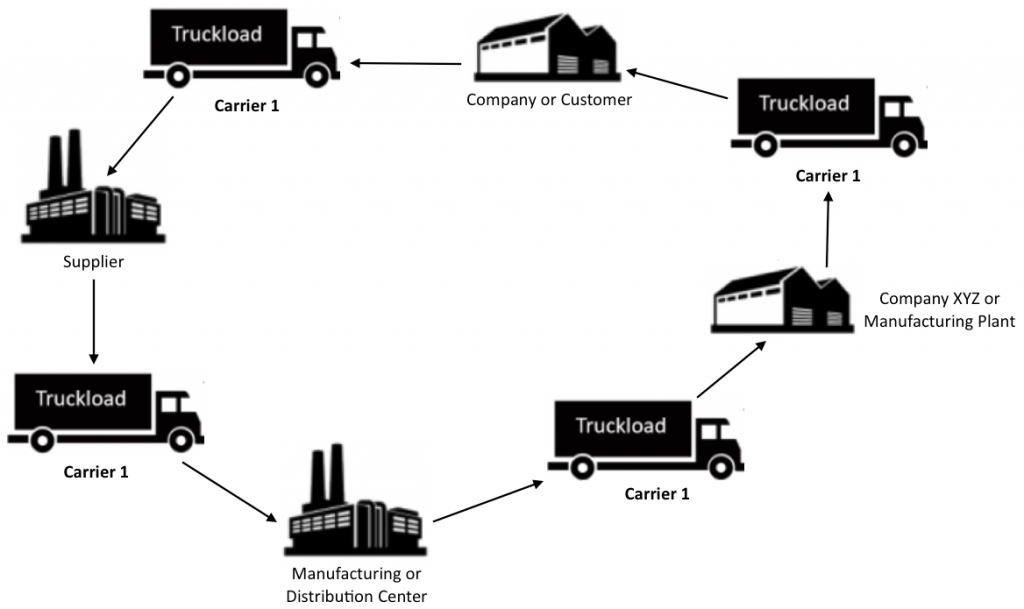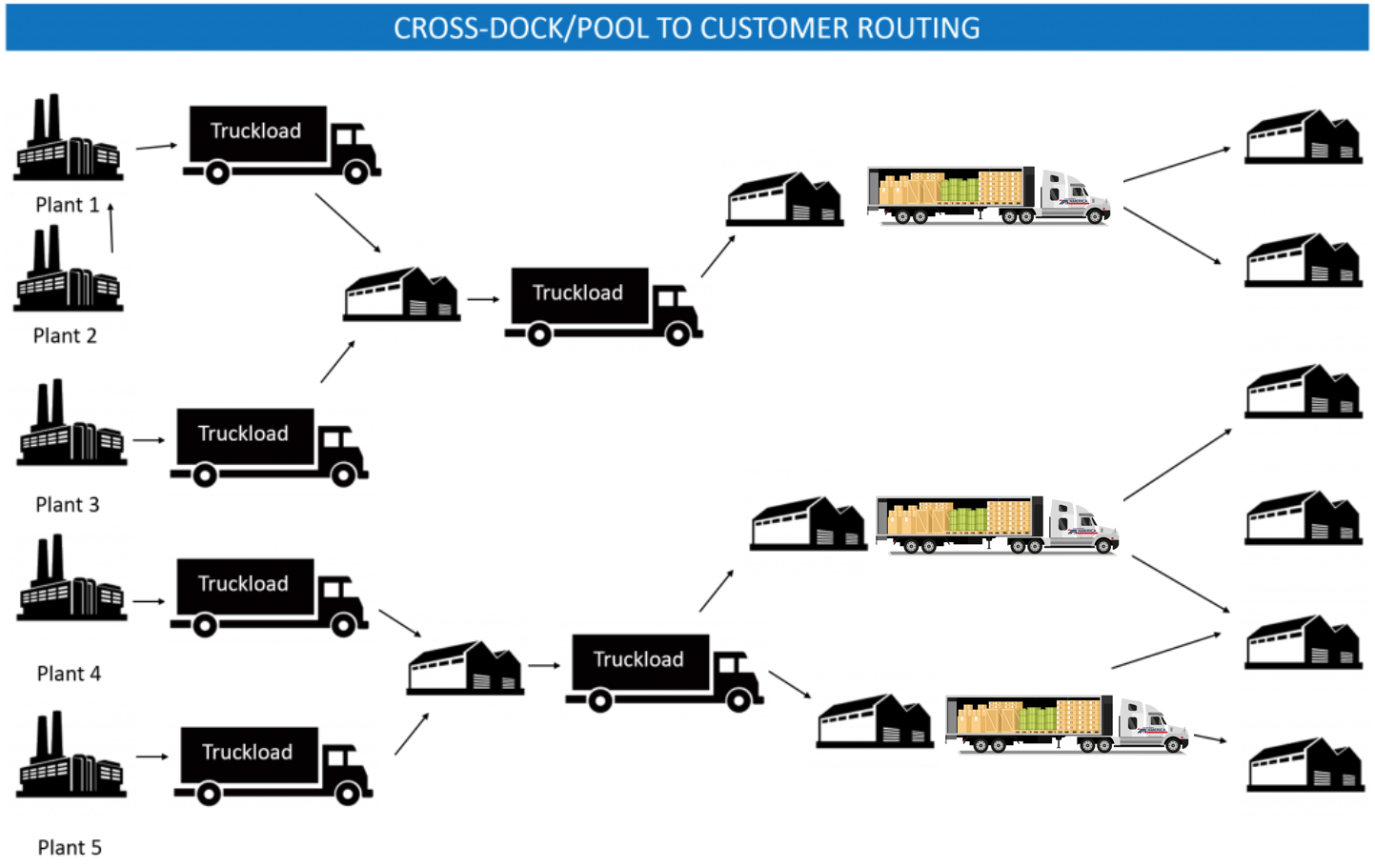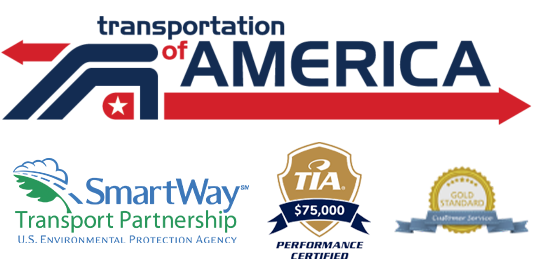Pool point programs and shipping strategies are creative ways of shipping via different processes and tactics versus the traditional shipment of Point A to Point B. Essentially, when you use various shipping strategies, you are looking for, as a shipper, transportation management optimization practices that can ultimately improve service to your customers and lower your overall freight costs. This document presents a few different transportation management optimization options for shippers. With many experts stating that there is a current capacity crunch,and further expect the crunch to stay for the coming years, it is imperative that shippers and the logistics companies who serve them, like TOA, to do all they can to find capacity at the lowest cost.
TOA, like a lot of North American logistics providers, focus on three modes of transportation, often called motor freight.
There are three primary segments of motor freight, or modes— Less than Truckload (LTL), Full Truckload (FTL), Small Package or parcel modes. Certainly, time and service requirements dictate that some freight moves via an expedited or time-definite ground move. However, the largest percentage or ground transportation shipments move via one of the three primary modes.The goal of managing shipments in each of these designated modes is maximizing asset utilization. This is accomplished by:
- Shifting from one mode to a more cost-effective mode
- Building larger, more economical shipments within any of the three modes
Shipping Optimization Through Creative &Strategic Freight Management Techniques
The mantra for all transportation professionals is simple: reduce costs and increase customer satisfaction levels. However, market forces such as higher fuel costs and decreased capacity work to undermine these goals.Core carrier programs and carrier negotiations that once played a fundamental role in shippers’ cost reduction strategies no longer are sufficient. Transportation professionals have begun to realize that negotiating lower rates with carriers is only a first step in an effective transportation management optimization program. To be successful at finding ways to reduce costs while maintaining customer service levels, shippers must utilize creative initiatives that will produce savings and allow them to remain competitive.
The best practices presented below represent strategies to optimize freight and in turn, achieve cost savings without reducing service levels to customers. The primary best practices that will be discussed in detail are:
- Straight Pooling
- Shipment Aggregation
- Shipment Consolidation
- Continuous Moves
- Cross-dock/Pooling
On a dailybasis,shippers that use LTL as a primary mode havea significant number of LTL sized orders that are destined for the same geographic area. Using a pooling strategy, these shipments can be combined to create a full truckload shipment out to a pool distribution facility that serves the geographic area. From this pool point, orders are shipped via LTL to end customers.
Using a pooling strategy does not increase handling costs as it substitutes pool point costs for an LTL carrier’s terminal distribution costs. Transit time should not be impacted in this model. The value that shippers derive results from shifting modes from LTL freight to truckload freight on the initial outbound leg of the shipment. By putting all of the orders on one master bill of lading, an opportunity for cost reduction is created.
Aggregation is creating a single shipment of multiple orders, originating from the same shipper to the same destination on the same day that would have otherwise have been released as separate shipments.As shown below, Shipper A has two shipments, one that is 4,000 pounds and another that is 2,000 pounds. Both of these shipments are destined for Customer B and would be routed via an LTL carrier. Aggregated together, these orders now ship via a more cost-effective LTL rate.
Shipment Consolidation is an option when multiple LTL orders can be combined with a truckload sized order that is not at full capacity, if they can be part of a stop-off in route to the final truckload destination.
However, in building this multi-stop route, several things must be considered:
- The out-of-route miles that will be incurred.
- The impact on delivery times due to the stop-off and pick-up requirements and constraints.
- The stop-off charges that will be incurred.
As depicted in the image below, the shipments are routed individually. The truckload shipment, which is not at full capacity, has a route of 750 miles to Customer XYZ. At $1.40 per mile, the cost of the shipment is $1,050. The 10,000 lb LTL shipment to Customer ABC ships at $5.00 per CWT for a total cost of $500. The total of the two shipments is $1,550.
If we assume that the total distance of this new route is 800 miles, the total transportation costs change significantly.
| Cost | Line Item |
| $1,120 | Truckload Line Haul Cost (80 miles X $1.40/mile) |
| $50 | Stop Charge |
| $1,170 | Total Cost |
Compared to the total cost of the shipments routed individually ($1,500), this represents a savings of $330 or 22%.
It is important to note that this strategy is not limited to consolidating LTL shipments with truckload shipments that have excess capacity. For example, three large LTL orders could be combined to build a multi-stop full truckload shipment. As long as stop-off charges and delivery time windows don’t constrain the route plan, this is a very viable option to drive cost savings.
Up until now, the strategies discussed have focused on maximizing vehicle capacity or improving asset utilization. If no further optimization can be obtained, the shipment must go out the door and the truck must move as loaded. Continuous move solutions allow for minimizing empty miles. To deploy this strategy, individual shipments are combined into legs of a continuous move. To illustrate, consider the following scenario within Company XYZ’s network:
- Truckload Carrier 1 ships inventory replenishment materials from the manufacturing plant to their distribution center (DC). This distance is 800 miles at a cost per mile of $1.50, or $1,200.
- Truckload Carrier 2 moves finished goods orders from the DC to their customer. This distance is 250 miles at $1.50 per mile, or $375.
- Truckload Carrier 3 moves inbound raw materials from a supplier to the manufacturing plant. The distance is 800 miles a $1.50/mile, $1200.
The total cost of all three shipments is $2,775.
A given carrier’s rate structure takes empty miles and situations of unattractive back-haul opportunities in its network into consideration when pricing lanes. If a carrier could operate at or near a 100% revenue to miles operated ratio, the carrier would be able to operate these lanes at a lower price per lane and still make a good profit. In this continuous move shown to the right, assume 200 empty miles are incurred in positioning the equipment from Company XYZ’s customer to their supplier. This makes the total system miles for Company XYZ, 2,050 miles. If a single carrier charges $1.20 per mile for the entire tour, the network cost to Company XYZ is now $2,460 (2,050 miles x $1.20 per mile). Comparing this cost with the individual carrier routing scenario, Company XYZ saves $315 or 11%.

LTL freight is quite often long-haul in nature due to several network considerations. For example, consider the following scenarios for Company XYZ:
- Company XYX has customers throughout the country and they ship to each customer directly from all their manufacturing plants.
- They have customers throughout the country and they ship all products to a single finished goods DC, where they hold inventory and ship to customers as required.
- On the inbound side, Company XYZ has suppliers located throughout the country who all ship directly to Company XYZ’s manufacturing plants.
- These same suppliers ship materials to an inbound raw materials DC where they are then shipped to Company XYZ’s manufacturing plants
Let us consider the scenario below:
If we deploy a cross dock network and replace the network where the individual manufacturing plants all ship directly to the customer base at the required frequencies plant orders would be shipped to plant assigned cross-dock facilities. All customer orders from a given plant may now be merged and shipped to a single cross dock, from which we can mode-shift and build truckload shipments. In some cases, it may be more cost efficient to use multi-plant milk runs to drive freight to the assigned cross-dock. Each order can be consigned to a customer assigned pool distribution facility. The cross docks assemble pool orders and ship full truckload to the pool points, where they are distributed to customers via LTL. The objective of this solution is to maximize the distance shipped with lower truckload rates. This is of course subject to customer order transit time requirements and constraints.

